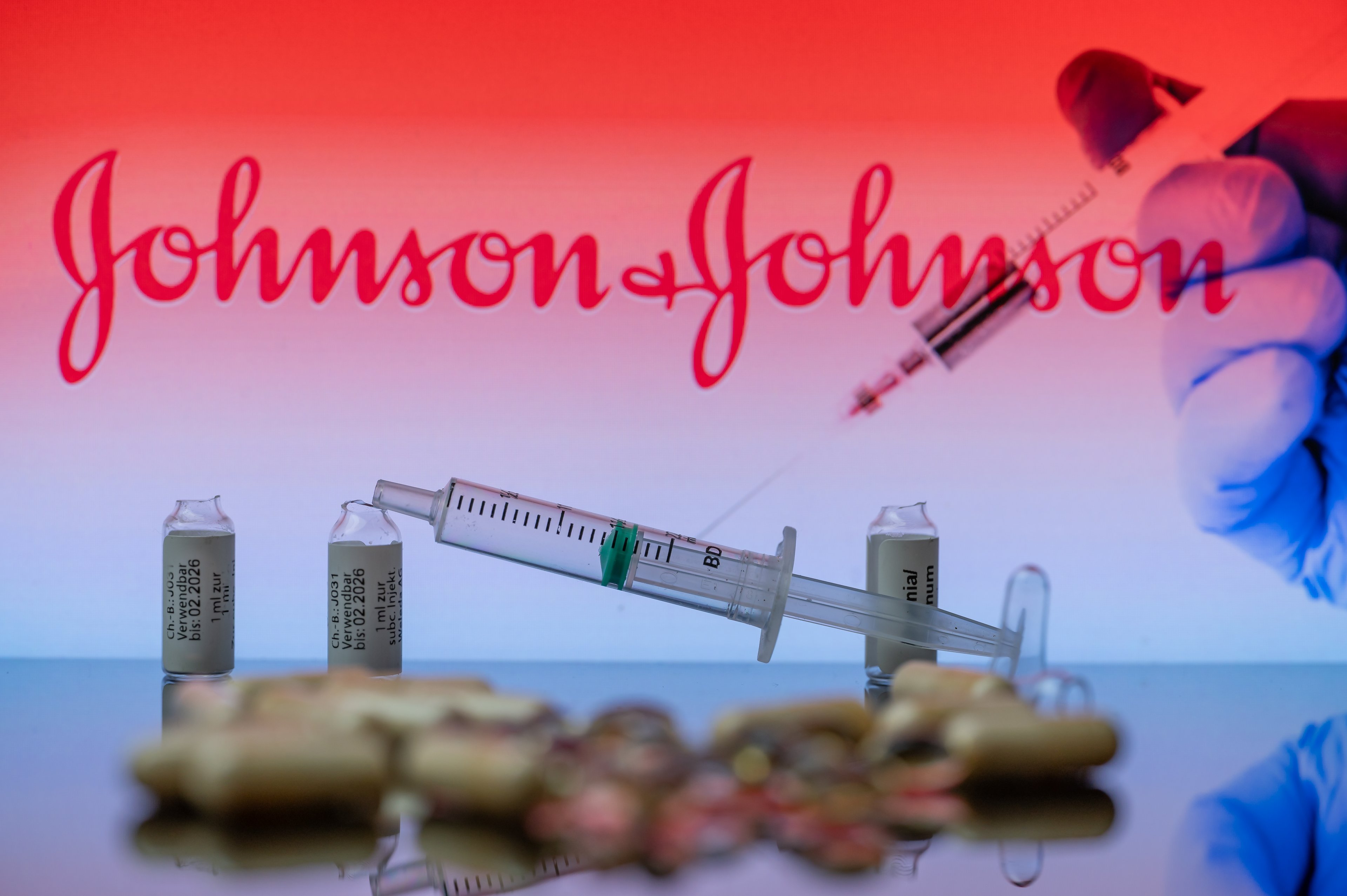Time certainly flies when you're having fun -- and much fun was to be had this year, with all three major market indexes returning in excess of 20% year-to-date!
In order to keep this joyous spirit going throughout the next two weeks leading up to Christmas, I've decided to once again count down this holiday season with my own Foolish rendition of the "12 Foolish Days of Christmas." Instead of turtle doves, French hens, and partridges invading pear trees, you'll be privy to high-growth stock ideas, game-changing innovations from a wealth of industries, unique ways to fuel your retirement account, and so on.
Yesterday, for our kickoff, we looked at 12 large-cap stocks set to more than double their profits in the upcoming year. Now it's time to move this countdown lower by a notch.
"On the 11th day of [Foolish] Christmas my true love gave to me..."
11 game-changing drugs approved by the Food and Drug Administration in 2013!

The odds are exceptionally low that a drug will make it from the laboratory setting all the way to pharmacy shelves -- but even those lucky FDA-approved drugs that do aren't guaranteed a successful launch or even a large market audience. Here are the 11 most important FDA approvals in 2013 that you need to know about which could make a remarkable difference in patient quality of care, and possibly pad your portfolio moving forward.
1. Sovaldi -- Gilead Sciences (GILD +0.99%)
Yes, I admit it; I have a man-crush on Sovaldi, which has the potential to be the most successful new hepatitis-C treatment ever! Approved just last week to treat genotypes 1 through 4 of the disease, it's the first oral treatment approved for use without interferon for genotype 2 & 3. Interferon can cause unwelcome flu-like symptoms in patients, so this is a big step in improving therapy tolerability and quality of life. Furthermore, Sovaldi delivered a sustained virologic response after 12 weeks (i.e., undetectable levels of disease after 12 weeks) of 90% in genotype 1, the most common form of the disease. This has blockbuster potential written all over it, but it'll likely find plenty of competition from AbbVie's direct-acting antiviral, which should hit the FDA's desk in 2014.
2. Invokana -- Johnson & Johnson (JNJ +2.07%)
Speaking of exciting approvals, perhaps nothing was more encouraging for type 2 diabetes patients than the late March approval of Johnson & Johnson's SGLT2 inhibitor, Invokana. Unlike commonly prescribed DPP-4 inhibitors like Januvia which work out of the pancreas and liver and are weight-neutral, Invokana works in the kidneys to inhibit glucose absorption and allow the body to excrete excess sugar while also providing the welcome side effect of weight loss. Since obesity and diabetes correlate to one another more often than not, Invokana could have the long-term edge in type 2 diabetes treatment.
3. Tecfidera -- Biogen Idec (BIIB 4.75%)
Just two days prior to Invokana's approval, Biogen Idec received the A-OK from the FDA for Tecfidera, an oral treatment for relapsed multiple sclerosis. Tecifdera plowed through clinical trials, delivering a 49% reduction in MS relapses while demonstrating a 71% to 99% drop in new or expanding lesions over both trials. Furthermore, relative to Sanofi's Aubagio, which carries with it a black box warning label, it offers possibly the most favorable long-term safety profile of all relapsing MS treatments. Tecifdera brought in $286 million in revenue just last quarter!
4. Imbruvica -- Pharmacyclics (NASDAQ: PCYC) and Johnson & Johnson
Another recent approval that's turning heads is Pharmacyclics and J&J's Imbruvica as a second-line treatment for mantle cell lymphoma. As only the second breakthrough therapy-designated drug to receive FDA approval, Imbruvica demonstrated an overall response rate of 66% in trials and was approved prior to an overall survival benefit was established. However, the big approval that shareholders are keeping their eyes out for is in treating chronic lymphocytic leukemia, or CLL, the most common adult form of leukemia. An FDA decision is expected by February.
5. Breo Ellipta -- GlaxoSmithKline (GSK +1.18%) and Theravance
Patients suffering with chronic obstructive pulmonary disorder (COPD) are certainly breathing a little easier this year following the approval in May of GlaxoSmithKline and Theravance's long-acting inhaled medication to treat airflow obstruction and reduce COPD exacerbations. The drug works by relaxing the muscles around the lungs and reducing inflammation, which allows air to flow in and out of the lungs more freely. The two collaborative partners also have Anoro Ellipta currently under review by the FDA, with a decision expected within the next week.
6. Liptruzet -- Pfizer and Merck
Liptruzet is another exciting drug approved by the FDA in May for the reduction of LDL-cholesterol (the bad type). Liptruzet is truly unique in that it combines a statin -- in this case the now-generic form of Pfizer's all-time best-selling drug Lipitor -- with Merck's cholesterol absorption inhibitor, Zetia. Individually, Lipitor and Zetia lowered LDL-cholesterol levels by 37%-54% and 20%, respectively, while the combo drug Liptruzet pushed LDL-cholesterol levels lower by 53%-61% in trials.
7. Mekinist & Tafinlar -- GlaxoSmithKline
It's the holidays and I'm in the spirit of giving, so you're getting a daily double at No. 7 with the FDA approval of monotherapy agents Mekinist and Tafinlar in late May for the treatment of advanced and unresectable melanoma. These two therapies target specific mutations, Tafinlar the BRAF V600E gene mutation and Mekinist the BRAF V600E or V600K gene mutations, which are established via a companion diagnostic test from GlaxoSmithKline which was also approved by the FDA at the same time. The actual results from late-stage trials showed that Tafinlar and Mekinist delivered an improvement in progression-free survival of 2.4 months and 3.3 months, respectively, over the chemotherapy arm.
8. Gazyva -- Roche
Pharmacyclics' Imbruvica may be the most high-profile breakthrough therapy drug to hit the market, but it wasn't the very first BTD drug to be approved by the FDA. That title goes to Roche's Gazyva which, in combination with chlorambucil, is aimed at treatment-naïve chronic lymphocytic leukemia patients. Approved early last month, Gazyva pushed patients' average progression-free survival practically a full-year longer to 23 months from the 11.1 months delivered by the chlorambucil control arm. Wall Street expects this breakthrough therapy to move to blockbuster status (greater than $1 billion in annual sales) in the coming years.
9. Gilotrif -- Boehringer Ingelheim
Just because Boehringer Ingelheim isn't a publicly traded company doesn't make the FDA approval of Gilotrif any less exciting. Gilotrif was approved in July for the treatment of a select EGFR gene mutation associated with late-stage non-small cell lung cancer -- specifically those patients which express EGFR exon 19 deletions or exon 21 L858R substitution gene mutations. Although no statistical difference was observed in overall survival, Gilotrif did delay tumor growth by 4.2 months in a 345-patient trial relative to those receiving chemotherapy.
10. Pomalyst -- Celgene (CELG +0.00%)
Approved back in February, Celgene's Pomalyst is giving some relief to patients suffering from an advanced form of multiple myeloma who've tried at least two existing therapies. In the 221-patient trial that led to its approval, Pomalyst by itself delivered an overall response rate of 7.4%. However, when combined with a low dose of dexamethasone, the ORR improved to 29.2% with a 7.4-month median duration of response. Domestically, the drug brought in $77 million in the third-quarter, while adding $13 million more overseas where it's known as Imnovid.
11. Kadcyla -- Roche and ImmunoGen (IMGN +0.00%)
Last, but certainly not least, we have the February approval of late-stage breast cancer-fighting drug Kadcyla from Roche and ImmunoGen. Targeted at HER2-positive metastatic breast cancer, this drug utilizes ImmunoGen's targeted antibody payload technology, which piggybacks Roche's Herceptin onto an antibody and releases this toxin when it comes into contact with a specific protein signature from a cancerous cell. Progression-free survival improved 3.2 months to 9.6 months in late-stage trials, while median overall survival jumped by 5.8 months to 30.9 months.









